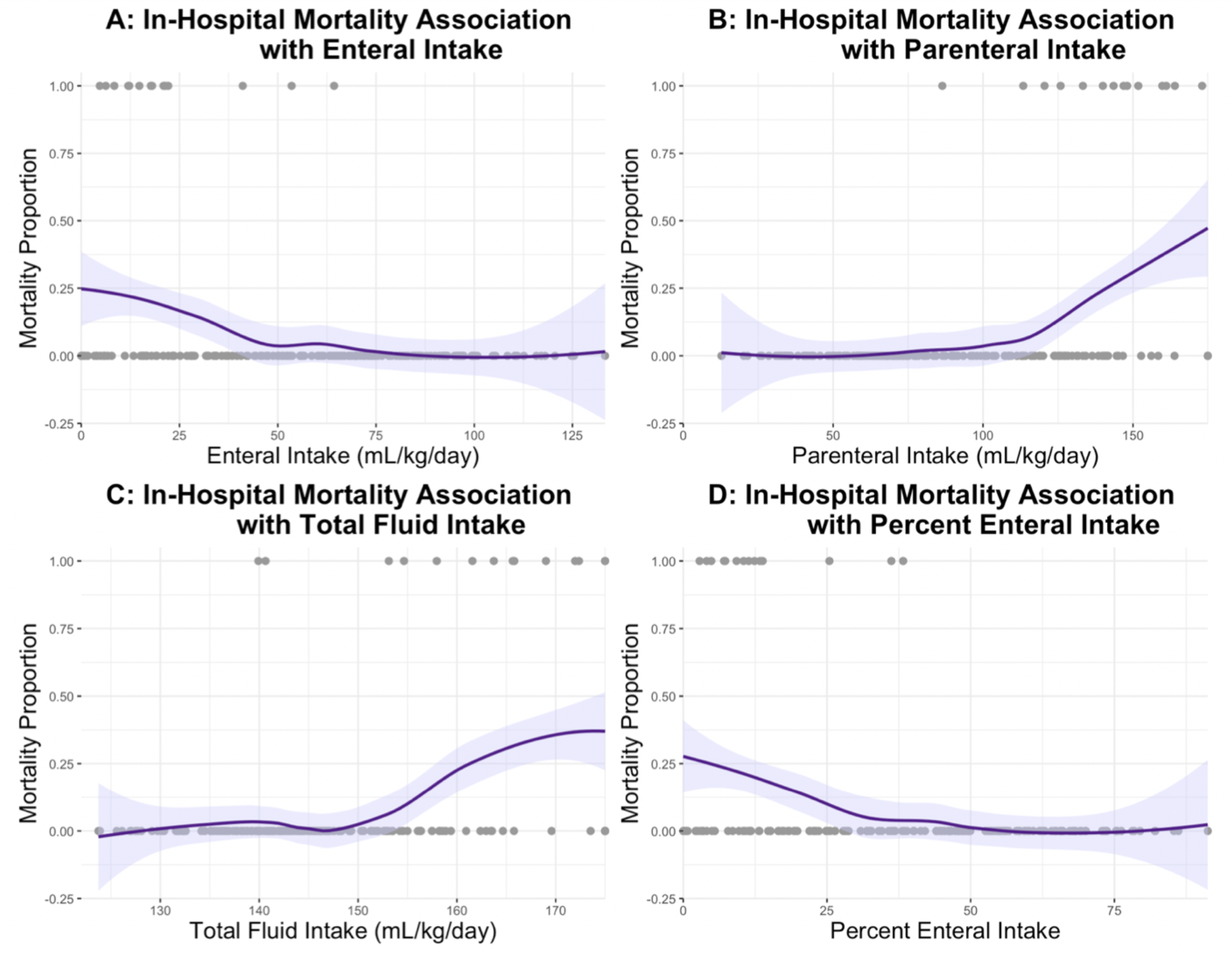Neonatal Fetal Nutrition & Metabolism
Neonatal GI Physiology & NEC 4: Gut Health, Enteral Nutrition and Oral Feeding
81 - Association of Enteral Feeding Volume in First Week with In-Hospital Outcomes of Newborns Born ≤30 weeks or ≤1,250 grams
Publication Number: 81.236

Olivia C. Brandon (she/her/hers)
Student Research Assistant
University of Washington School of Medicine
Seattle, Washington, United States
Presenting Author(s)
Background:
Early introduction of human milk feeds improves outcomes for premature newborns. Yet, the ideal balance of enteral to parenteral fluids in the first week in very low birthweight infants remains unclear. While increasing total fluid volumes have been associated with necrotizing enterocolitis (NEC), patent ductus arteriosus (PDA), and bronchopulmonary dysplasia (BPD), previous studies have not evaluated the relative contributions of enteral and parenteral fluid volumes in the first week.
Objective: We sought to evaluate the association between enteral fluid intake, parenteral intake, total fluid intake, and percent enteral of total fluids in the first week after birth with adverse in-hospital morbidity and mortality among preterm newborns.
Design/Methods: We performed a retrospective cross-sectional study evaluating newborns admitted to our single-center level IV NICU who were born at ≤30 gestational weeks or ≤1,250g and survived 7 days, excluding congenital anomalies. Using continuous curves of fluid intake versus mortality, cut-offs were selected for categorical evaluation of enteral fluid intake, parenteral intake, total fluid intake, and percent enteral intake of total fluids where the confidence intervals for mortality no longer included 0%. Outcomes included in-hospital mortality, BPD, NEC, PDA, retinopathy of prematurity (ROP), and length of hospital stay (LOS).
Results: Among N=186 infants, the lowest mortality rates were seen in those who received parenteral fluids < 120 mL/kg/day, enteral feeds ≥40 mL/kg/day, total fluid intake < 155mL/kg/day, and percent enteral of total fluids ≥25% (Figure 1). Those who received an average of total fluids ≥155 mL/kg/day over the first week had 12% increased odds of in-hospital mortality, 13% increased odds of NEC, and 17% increased odds of ROP requiring treatment after adjusting for potential confounders (Table 1). Enteral feeds ≥40 mL/kg/day were not associated with increased odds of any adverse in-hospital outcomes, but percent enteral of total fluids ≥25% was associated with decreased odds of mortality and BPD and a shorter LOS (Table 2).
Conclusion(s):
Total fluid volumes ≥155 mL/kg/day in the first week after birth are associated with increased odds of mortality, NEC, and longer LOS among preterm newborns born ≤30 weeks’ gestation or ≤1,250g birthweight. Enteral fluid volumes ≥40 mL/kg/day were not associated with adverse outcomes, including NEC, and enteral fluids ≥25% of total fluids were associated with decreased odds of adverse outcomes.
.png)
.png)
